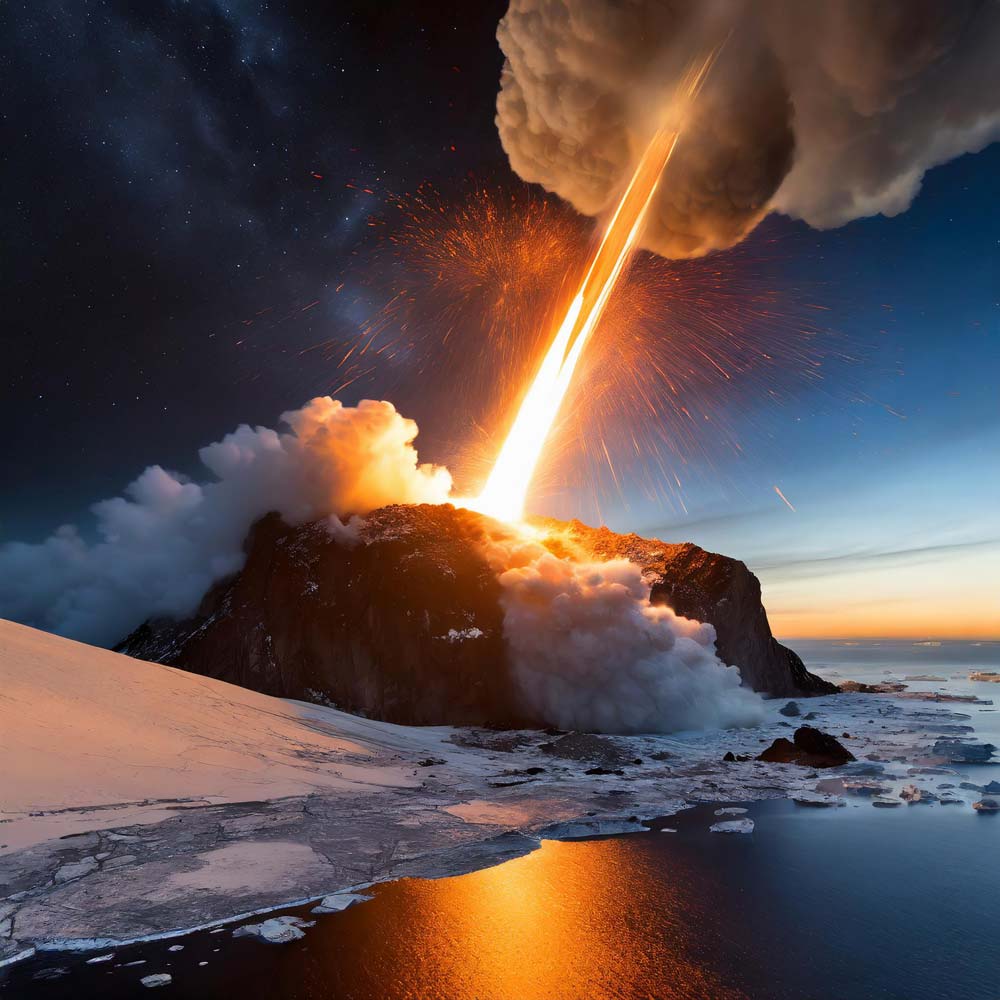Hidden beneath the icy expanse of Antarctica lies a geological marvel shrouded in mystery—the Wilkes Land crater. Stretching an impressive 500 kilometers in diameter, this colossal impact site is among the largest known on Earth. While its existence has been known to scientists for decades, the true nature of its origin and its potential significance in Earth’s history continue to captivate researchers worldwide.
Uncovering Antarctica’s Secrets
Discovered through remote sensing techniques, the Wilkes Land crater resides beneath the vast East Antarctic Ice Sheet, rendering direct observation impossible. Its existence was first suggested in the 1960s when geophysicists studying the region noticed anomalous gravitational and magnetic readings. Further investigations using radar and satellite imagery confirmed the presence of a massive circular structure buried beneath the ice, indicative of a meteorite impact crater.
A Geological Enigma
The sheer scale of the Wilkes Land crater is staggering, rivaling even the Chicxulub crater in Mexico, which is associated with the mass extinction event that spelled the end for the dinosaurs. Despite its size, the precise age of the Wilkes Land impact remains uncertain, with estimates ranging from tens of millions to hundreds of millions of years old. Pinpointing its age is crucial in unraveling its potential role in shaping Earth’s geological and biological history.
Clues from the Past
While direct evidence of the impact event is elusive due to the thick ice covering the region, researchers have employed various techniques to glean insights into the crater’s formation and its aftermath. Sediment cores retrieved from the seabed surrounding Antarctica provide valuable clues, preserving a record of past environmental changes and potential impact-related disturbances.
One intriguing line of evidence comes from the presence of microscopic glass beads known as microtektites, which are formed during high-energy impacts. These tiny spheres have been discovered in sediment cores from locations around the world, suggesting that the Wilkes Land crater could have unleashed a cataclysmic event with global repercussions.
Impact on Life
The timing of the Wilkes Land impact, if correlated with mass extinction events, raises questions about its potential effects on life on Earth. While no direct evidence linking the crater to a specific extinction event has been found, its sheer size suggests that it could have had significant ecological ramifications. The release of enormous amounts of energy upon impact would have triggered widespread wildfires, tsunamis, and drastic climate changes, potentially altering ecosystems on a global scale.
Unraveling the Mystery
Despite decades of research, many questions surrounding the Wilkes Land crater remain unanswered. Determining its precise age and establishing a definitive link to mass extinction events are among the primary objectives for scientists studying this enigmatic feature. Advanced dating techniques, coupled with ongoing geological and geophysical investigations, offer hope for uncovering the truth hidden beneath the Antarctic ice.
Implications for Planetary Science
Beyond its significance for Earth’s history, the Wilkes Land crater offers valuable insights into planetary processes and the nature of impact events in our solar system. By studying impact craters on Earth, scientists gain crucial information that can be applied to understanding similar features on other planetary bodies, such as the Moon, Mars, and beyond. This interdisciplinary approach not only advances our knowledge of Earth’s past but also contributes to our understanding of the broader universe.
Protecting Earth’s Heritage
As our understanding of impact events and their consequences deepens, so too does our awareness of the importance of planetary defense. While the likelihood of a catastrophic impact on Earth is rare, the potential consequences underscore the need for continued vigilance and preparedness. Monitoring near-Earth objects and developing strategies to mitigate potential threats are essential endeavors for safeguarding life on our planet.
Conclusion
The Wilkes Land crater stands as a testament to the dynamic and often violent history of our planet. Concealed beneath the icy depths of Antarctica, it serves as a reminder of the profound forces at work in shaping Earth’s geological and biological evolution. While much remains to be discovered about its origins and implications, the ongoing quest to unravel the mysteries of the Wilkes Land crater offers tantalizing prospects for advancing our understanding of Earth’s past and informing our efforts to safeguard its future.



